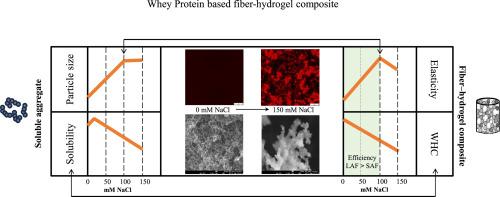Influence of amyloid fibril length and ionic strength on WPI-based fiber-hydrogel composites: Microstructural, rheological and water holding properties
Abstract
One of the possible advantages of protein fibers in composites is that they can interact with the continuous gel matrix as active fillers at neutral pH. This study aimed to investigate the impacts of short (SAF) and long amyloid fibrils (LAF) and ionic strength (0–150 mM NaCl) on the whey protein isolate (WPI)-based fiber-hydrogel composites. The water holding capacity of the composite gels more depended on the gel coarseness rather than their elasticity. Significant differences were observed between the rheological data of the SAF-WPI and LAF-WPI composites, and the maximum elastic modulus (G′) was achieved at 100 mM NaCl where the LAF-WPI composites outperformed the SAF-WPI ones in enhancing G′ and hardness. Nevertheless, the elasticity and hardness of the composites dramatically dropped at 150 mM NaCl due to the change in the gel microstructure from fine strand to particulate, according to CLSM and SEM images. Interestingly, the trend in average particle size changed at 150 mM NaCl for the SAF- and LAF-WPI soluble aggregates compared to the WPI soluble aggregates. The effects of amyloid fibril and NaCl concentration on the protein aggregates as the initial building blocks of the gel were confirmed by size exclusion chromatography. These results indicated that the properties of composite gel were related to the balance between aggregate creation and the development of cross-links between them during gelation. The findings of the current study could be exploited to predict the functional behavior of globular protein gels containing amyloid fibrils with different lengths at various NaCl concentrations.


 求助内容:
求助内容: 应助结果提醒方式:
应助结果提醒方式:


